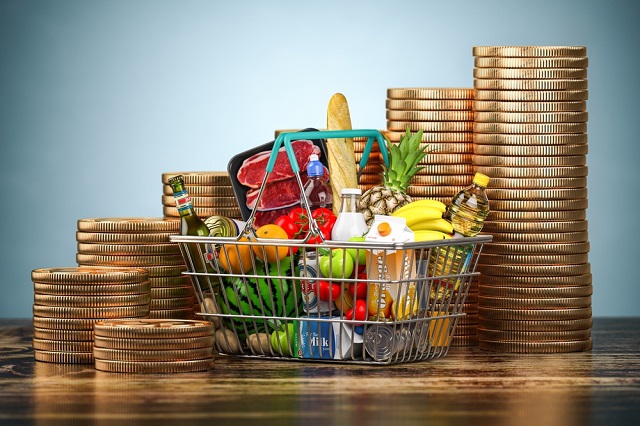Business
Comparing four federal finance ministers in moments of crisis

From the Fraser Institute
By Grady Munro, Milagros Palacios and Jason Clemens
The sudden resignation of federal finance minister (and deputy prime minister) Chrystia Freeland, hours before the government was scheduled to release its fall economic update has thrown an already badly underperforming government into crisis. In her letter of resignation, Freeland criticized the government, and indirectly the prime minister, for “costly political gimmicks” and irresponsible handling of the country’s finances and economy during a period of great uncertainty.
But while Freeland’s criticism of recent poorly-designed federal policies is valid, her resignation, in some ways, tries to reshape her history into that of a more responsible finance minister. That is, however, ultimately an empirical question. If we contrast the performance of the last four long-serving (more than three years) federal finance ministers—Paul Martin (Liberal), Jim Flaherty (Conservative), Bill Morneau (Liberal) and Freeland (Liberal)—it’s clear that neither Freeland nor her predecessor (Morneau) were successful finance ministers in terms of imposing fiscal discipline or overseeing a strong Canadian economy.
Let’s first consider the most basic measure of economic performance, growth in per-person gross domestic product (GDP), adjusted for inflation. This is a broad measure of living standards that gauges the value of all goods and services produced in the economy adjusted for the population and inflation. The chart below shows the average annual growth in inflation-adjusted per-person GDP over the course of each finance minister’s term. (Adjustments are made to reflect the effects of temporary recessions or unique aspects of each minister’s tenure to make it easier to compare the performances of each finance minister.)

Sources: Statistics Canada Table 17-10-0005-01, Table 36-10-0222-01; 2024 Fall Economic Statement
By far Paul Martin oversaw the strongest growth in per-person GDP, with an average annual increase of 2.4 per cent. Over his entire tenure spanning a decade, living standards rose more than 25 per cent.
The average annual increase in per-person GDP under Flaherty was 0.6 per cent, although that includes the financial recession of 2008-09. If we adjust the data for the recession, average annual growth in per-person GDP was 1.4 per cent, still below Martin but more than double the rate if the effects of the recession are included.
During Bill Morneau’s term, average annual growth in per-person GDP was -0.5 per cent, although this includes the effects of the COVID recession. If we adjust to exclude 2020, Morneau averaged a 0.7 per cent annual increase—half the adjusted average annual growth rate under Flaherty.
Finally, Chrystia Freeland averaged annual growth in per-person GDP of -0.3 per cent during her tenure. And while the first 18 or so months of her time as finance minister, from the summer of 2020 through 2021, were affected by the COVID recession and the subsequent rebound, the average annual rate of per-person GDP growth was -0.2 per cent during her final three years. Consequently, at the time of her resignation from cabinet in 2024, Canadian living standards are projected to be 1.8 per cent lower than they were in 2019.
Let’s now consider some basic fiscal measures.
Martin is by far the strongest performing finance minister across almost every metric. Faced with a looming fiscal crisis brought about by decades of deficits and debt accumulation, he reduced spending both in nominal terms and as a share of the economy. For example, after adjusting for inflation, per-person spending on federal programs dropped by 5.9 per cent during his tenure as finance minister (see chart below). As a result, the federal government balanced the budget and lowered the national debt, ultimately freeing up resources via lower interest costs for personal and business tax relief that made the country more competitive and improved incentives for entrepreneurs, businessowners, investors and workers.

*Note: Freeland’s term began in 2020, but given the influence of COVID, 2019 is utilized as the baseline for the overall change in spending. Sources: Statistics Canada Table 17-10-0005-01, Table 36-10-0130-01; Fiscal Reference Tables 2024; 2024 Fall Economic Statement
Flaherty’s record as finance minister is mixed, in part due to the recession of 2008-09. Per-person program spending (inflation adjusted) increased by 11.6 per cent, and there was a slight (0.6 percentage point) increase in spending as a share of the economy. Debt also increased as a share of the economy, although again, much of the borrowing during Flaherty’s tenure was linked with the 2008-09 recession. Flaherty did implement tax relief, including extending the business income tax cuts started under Martin, which made Canada more competitive in attracting investment and fostering entrepreneurship.
Both Morneau and Freeland recorded much worse financial performances than Flaherty and Martin. Morneau increased per-person spending on programs (inflation adjusted) by 37.1 per cent after removing 2020 COVID-related expenditures. Even if a more generous assessment is used, specifically comparing spending in 2019 (prior to the effects of the pandemic and recession) per-person spending still increased by 18.1 per cent compared to the beginning of his tenure.
In his five years, Morneau oversaw an increase in total federal debt of more than $575 billion, some of which was linked with COVID spending in 2020. However, as multiple analyses have concluded, the Trudeau government spent more and accumulated more debt during COVID than most comparable industrialized countries, with little or nothing to show for it in terms of economic growth or better health performance. Simply put, had Morneau exercised more restraint, Canada would have accumulated less debt and likely performed better economically.
Freeland’s tenure as finance minister is the shortest of the four ministers examined. It’s nonetheless equally as unimpressive as that of her Trudeau government predecessor (Morneau). If we use baseline spending from 2019 to adjust for the spike in spending in 2020 when she was appointed finance minister, per-person spending on programs by the federal government (inflation adjusted) during Freeland’s term increased by 4.1 per cent. Total federal debt is expected to increase from $1.68 trillion when Freeland took over to an estimated $2.2 trillion this year, despite the absence of a recession or any other event that would impair federal finances since the end of COVID in 2021. For some perspective, the $470.8 billion in debt accumulated under Freeland is more than double the $220.3 billion accumulated under Morneau prior to COVID. And there’s an immediate cost to that debt in the form of $53.7 billion in expected federal debt interest costs this year. These are taxpayer resources unavailable for actual services such as health care.
Freeland’s resignation from cabinet sent shock waves throughout the country, perhaps relieving her of responsibility for the Trudeau government’s latest poorly-designed fiscal policies. However, cabinet ministers bear responsibility for the performance of their ministries—meaning Freeland must be held accountable for her previous budgets and the fiscal and economic performance of the government during her tenure. Compared to previous long-serving finances ministers, it’s clear that Chrystia Freeland, and her Trudeau predecessor Bill Morneau, failed to shepherd a strong economy or maintain responsible and prudent finances.
Agriculture
Supply Management Is Making Your Christmas Dinner More Expensive

From the Frontier Centre for Public Policy
By Conrad Eder
The food may be festive, but the price tag isn’t, and supply management is to blame
With Christmas around the corner, Canadians will be heading to the grocery store to pick up the essentials for a tasty Christmas feast. Milk and eggs to make dinner rolls, butter for creamy mashed potatoes, an assortment of cheeses as an appetizer, and, of course, the Christmas turkey.
All delicious. All essential. And all more expensive than they need to be because of a longstanding government policy. It’s called supply management.
Consider what a family might purchase when hosting Christmas dinner. Two cartons of eggs, two cartons of milk, a couple of blocks of cheese, a few sticks of butter, and an eight-kilogram turkey. According to Agriculture and Agri-Food Canada and Statistics Canada, that basket of goods costs a little less than $80.
Using price premiums calculated in a 2015 University of Manitoba study, Canada’s supply management system is responsible for $16.69 to $20.48 of the cost of that Christmas dinner. That’s a 21 to 26 per cent premium Canadian consumers pay on those five staples alone. Planning on making a yogurt dip or serving ice cream with dessert? Those extra costs continue to climb.
Canadians pay these premiums for poultry, dairy and eggs because of how Canada’s supply management system works. Farmers must obtain government-issued production quotas that dictate how much they’re allowed to produce. Prices are set by government bodies rather than in an open market. High tariffs block imports and restrict competition from international producers.
The costs of supply management are significant, amounting to billions of dollars every year, yet they are largely hidden, spread across millions of households’ grocery bills. Meanwhile, the benefits flow to a small number of quota-holding farmers. Their quotas are worth millions of dollars and help ensure profitable returns.
These farmers have every incentive to lobby, organize and defend the current system. Wanting special protection is one thing. Actually being given it is another. It is the responsibility of elected officials to resist such demands. Elected to represent all Canadians, politicians should unapologetically prioritize the public interest over any special interests.
Yet in June 2025, Parliament did the opposite. Rather than solve a problem that costs Canadians billions each year, members of Parliament from every party, Liberal, Conservative, Bloc, NDP and Green, unanimously approved Bill C-202, further entrenching the system that makes grocery bills more expensive at a time when families can least afford it. Bill C-202 prohibits Canada from offering any further market access concessions on supply-managed sectors in future trade negotiations.
This decision is even more disappointing when we consider what other nations have already accomplished. Australia and New Zealand demonstrate that removing supply management is not only possible but beneficial.
Australia operated a dairy quota system for decades before abolishing it in 2000. New Zealand began dismantling its dairy supply management regime in 1984 and completed the process in 2001. Both countries found that competitive markets provided their citizens with the access to goods they needed without the hidden costs. If these countries could eliminate supply management, so can Canada.
As the government scrambles to combat the rising cost of living, one of the simplest and most effective solutions continues to be ignored. Eliminating supply management. Removing the quotas, the price controls and the tariffs would allow market competition to do what it does across every other product category. It delivers choice, quality and affordability.
As Canadians gather for Christmas dinner, the feast may be delicious, but it will once again be more expensive than it needs to be. That is the cost of supply management, and Canadians should no longer have to bear it.
Conrad Eder is a policy analyst at the Frontier Centre for Public Policy.
Business
Taxing food is like slapping a surcharge on hunger. It needs to end

This article supplied by Troy Media.
Cutting the food tax is one clear way to ease the cost-of-living crisis for Canadians
About a year ago, Canada experimented with something rare in federal policymaking: a temporary GST holiday on prepared foods.
It was short-lived and poorly communicated, yet Canadians noticed it immediately. One of the most unavoidable expenses in daily life—food—became marginally less costly.
Families felt a modest but genuine reprieve. Restaurants saw a bump in customer traffic. For a brief moment, Canadians experienced what it feels like when government steps back from taxing something as basic as eating.
Then the tax returned with opportunistic pricing, restoring a policy that quietly but reliably makes the cost of living more expensive for everyone.
In many ways, the temporary GST cut was worse than doing nothing. It opened the door for industry to adjust prices upward while consumers were distracted by the tax relief. That dynamic helped push our food inflation rate from minus 0.6 per cent in January to almost four per cent later in the year. By tinkering with taxes rather than addressing the structural flaws in the system, policymakers unintentionally fuelled volatility. Instead of experimenting with temporary fixes, it is time to confront the obvious: Canada should stop taxing food altogether.
Start with grocery stores. Many Canadians believe food is not taxed at retail, but that assumption is wrong. While “basic groceries” are zero-rated, a vast range of everyday food products are taxed, and Canadians now pay over a billion dollars a year in GST/HST on food purchased in grocery stores.
That amount is rising steadily, not because Canadians are buying more treats, but because shrinkflation is quietly pulling more products into taxable categories. A box of granola bars with six bars is tax-exempt, but when manufacturers quietly reduce the box to five bars, it becomes taxable. The product hasn’t changed. The nutritional profile hasn’t changed. Only the packaging has changed, yet the tax flips on.
This pattern now permeates the grocery aisle. A 650-gram bag of chips shrinks to 580 grams and becomes taxable. Muffins once sold in six-packs are reformatted into three-packs or individually wrapped portions, instantly becoming taxable single-serve items. Yogurt, traditionally sold in large tax-exempt tubs, increasingly appears in smaller 100-gram units that meet the definition of taxable snacks. Crackers, cookies, trail mixes and cereals have all seen slight weight reductions that push them past GST thresholds created decades ago. Inflation raises food prices; Canada’s outdated tax code amplifies those increases.
At the same time, grocery inflation remains elevated. Prices are rising at 3.4 per cent, nearly double the overall inflation rate. At a moment when food costs are climbing faster than almost everything else, continuing to tax food—whether on the shelf or in restaurants—makes even less economic sense.
The inconsistencies extend further. A steak purchased at the grocery store carries no tax, yet a breakfast wrap made from virtually the same inputs is taxed at five per cent GST plus applicable HST. The nutritional function is not different. The economic function is not different. But the tax treatment is entirely arbitrary, rooted in outdated distinctions that no longer reflect how Canadians live or work.
Lower-income households disproportionately bear the cost. They spend 6.2 per cent of their income eating outside the home, compared with 3.4 per cent for the highest-income households. When government taxes prepared food, it effectively imposes a higher burden on those often juggling two or three jobs with limited time to cook.
But this is not only about the poorest households. Every Canadian pays more because the tax embeds itself in the price of convenience, time and the realities of modern living.
And there is an overlooked economic dimension: restaurants are one of the most effective tools we have for stimulating community-level economic activity. When people dine out, they don’t just buy food. They participate in the economy. They support jobs for young and lower-income workers. They activate foot traffic in commercial areas. They drive spending in adjacent sectors such as transportation, retail, entertainment and tourism.
A healthy restaurant sector is a signal of economic confidence; it is often the first place consumers re-engage when they feel financially secure. Taxing prepared food, therefore, is not simply a tax on convenience—it is a tax on economic participation.
Restaurants Canada has been calling for the permanent removal of GST/HST on all food, and they are right. Eliminating the tax would generate $5.4 billion in consumer savings annually, create more than 64,000 foodservice jobs, add over 15,000 jobs in related sectors and support the opening of more than 2,600 new restaurants across the country. No other affordability measure available to the federal government delivers this combination of economic stimulus and direct relief.
And Canadians overwhelmingly agree. Eighty-four per cent believe food should not be taxed, regardless of where it is purchased. In a polarized political climate, a consensus of that magnitude is rare.
Ending the GST/HST on all food will not solve every affordability issue but it is one of the simplest, fairest and most effective measures the federal government can take immediately.
Food is food. The tax system should finally accept that.
Dr. Sylvain Charlebois is a Canadian professor and researcher in food distribution and policy. He is senior director of the Agri-Food Analytics Lab at Dalhousie University and co-host of The Food Professor Podcast. He is frequently cited in the media for his insights on food prices, agricultural trends, and the global food supply chain.
Troy Media empowers Canadian community news outlets by providing independent, insightful analysis and commentary. Our mission is to support local media in helping Canadians stay informed and engaged by delivering reliable content that strengthens community connections and deepens understanding across the country.
-

 Censorship Industrial Complex23 hours ago
Censorship Industrial Complex23 hours agoDeath by a thousand clicks – government censorship of Canada’s internet
-

 Daily Caller24 hours ago
Daily Caller24 hours agoChinese Billionaire Tried To Build US-Born Baby Empire As Overseas Elites Turn To American Surrogates
-

 Great Reset1 day ago
Great Reset1 day agoViral TikTok video shows 7-year-old cuddling great-grandfather before he’s euthanized
-

 Automotive1 day ago
Automotive1 day agoPoliticians should be honest about environmental pros and cons of electric vehicles
-

 Digital ID22 hours ago
Digital ID22 hours agoCanada releases new digital ID app for personal documents despite privacy concerns
-

 Community19 hours ago
Community19 hours agoCharitable giving on the decline in Canada
-

 Alberta1 day ago
Alberta1 day agoSchools should go back to basics to mitigate effects of AI
-

 Bruce Dowbiggin21 hours ago
Bruce Dowbiggin21 hours agoNFL Ice Bowls Turn Down The Thermostat on Climate Change Hysteria






